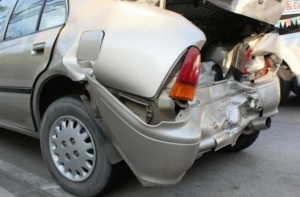When you come across an advert for an exceptionally cheap car, only to then see ‘Category D’ at some point in the listing, what do you do? If the answer is move on and ignore the ad completely, you could be missing out.
 For most people, the idea of buying a crash-damaged car isn’t necessarily too appealing. After all, it makes little sense to spend good money on a car that has already been crashed and severely damaged.
For most people, the idea of buying a crash-damaged car isn’t necessarily too appealing. After all, it makes little sense to spend good money on a car that has already been crashed and severely damaged.
The thing is though, there are currently four crash-damaged car classifications, which indicate very different levels of damage. What’s more, they’re about to change in the very near future, in order to make things a little easier to understand.
As things stand right now, Cat A vehicles are those that have been damaged so extensively that they cannot be salvaged in any way. Instead, they need to be crushed and recycled. Cat B vehicles have absolutely no repair value whatsoever, but may contain plenty of spare parts that can be salvaged. Cat C vehicles may be extensively damaged, but technically have the potential to be repaired and put back into use. Nevertheless, doing so may cost more than the value of the car at current market prices. As for Cat D, these are the vehicles that may have been written off, but also have the potential to be repaired for a much lower cost. In fact, it could be that the damage is surprisingly light.
For example, in the case of some used cars, something as simple as a smashed tailgate could lead to the vehicle being written off as Cat D. This, despite the fact that you could probably pick up a used tailgate from a scrap yard for less than £100, thus restoring the car to full roadworthy status. Which you could then use, or sell on for £1,000 or so.
So once again, you might want to think twice when you come across Cat D cars – some of which can be absolute bargains.
As of October this year however, things are set to change. The categories will be changed to A, B, S and N, which indicate the following:
- Cat A. Once again, cars that cannot be salvaged in any way and are suitable only for scrapping and recycling.
- Cat B. Badly damaged cars that cannot be repaired, but can at least be salvaged in terms of some of their parts.
- Cat S. This new categorisation stands for ‘structural’, which basically means that the structure of the car has been damaged and therefore extensive repairs will be needed.
- Cat N. Replacing Cat D, these cars are those deemed to have suffered ‘non-structural’ damage and therefore may only need minor repairs to get them back on the road.
Of course, you need to be proactive to ensure that you don’t pick up a dud, if planning on taking home a crash-damaged car. Which is why in our next post, Take My Scrap Car will be offering a few more pointers as to how you can safely buy a Cat D car, potentially saving yourself a fortune!
















